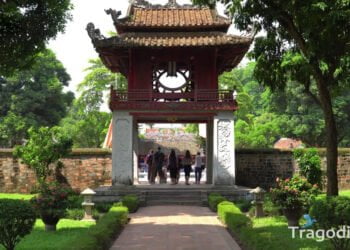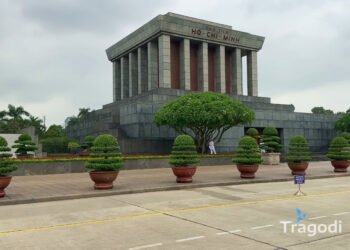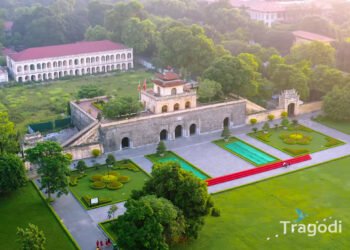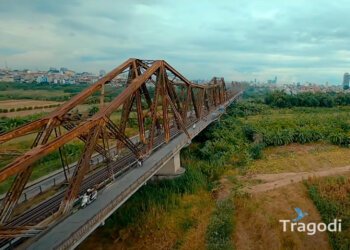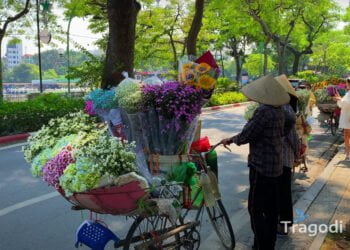
The One Pillar Pagoda, originally named Lien Hoa Dai, meaning Lotus Tower, is designed like a giant lotus flower floating on the water. The pagoda was built in 1049, during the reign of King Ly Thai Tong, following a dream of the king about the Goddess of Mercy sitting on a lotus throne. The pagoda is seen as an expression of the king’s piety and aspiration towards Buddhism. The pagoda is also a place to pray for peace and prosperity of the country.
Through many historical periods, the One Pillar Pagoda has been repaired and restored many times. In 1105, King Ly Thai Tong completed the pagoda by digging the Lien Hoa Dai pond, building corridors around the pond, and building a rainbow bridge to cross over. In 1954, when the French withdrew from Hanoi, the pagoda was destroyed, leaving only a part of the pillar. In 1955, the pagoda was rebuilt in the old architecture by architect Nguyen Ba Lang. Today, the One Pillar Pagoda is one of the special national relics being protected.
The One Pillar Pagoda not only has architectural value, but also has profound spiritual significance. The pagoda is considered a symbol of steadfastness and resilience in the face of life’s difficulties and challenges. The pagoda is also a place to pray for fertility and blooming, as the lotus flower is capable of blooming in the mud. In addition, the pagoda is a place to show respect and honor for the Goddess of Mercy, the compassionate and suffering-saving bodhisattva of Buddhism. Many people believe that if they come to the One Pillar Pagoda and pray, they will be blessed and lucky.
The One Pillar Pagoda is a must-visit destination when you visit Hanoi. You will admire a unique and beautiful architectural work, as well as learn about the history and culture of the Vietnamese people. You will also feel the tranquility and peace when coming to this pagoda.


